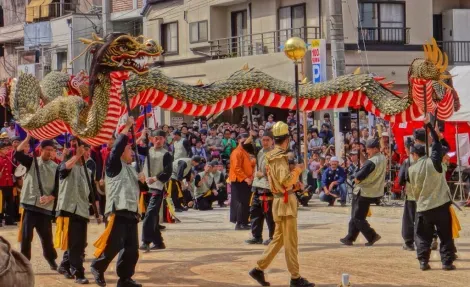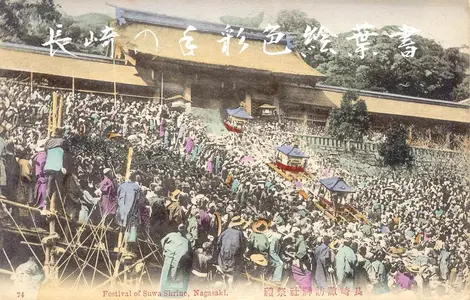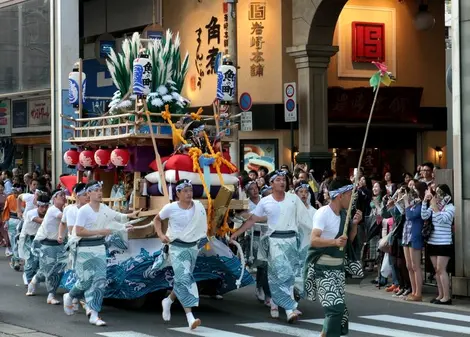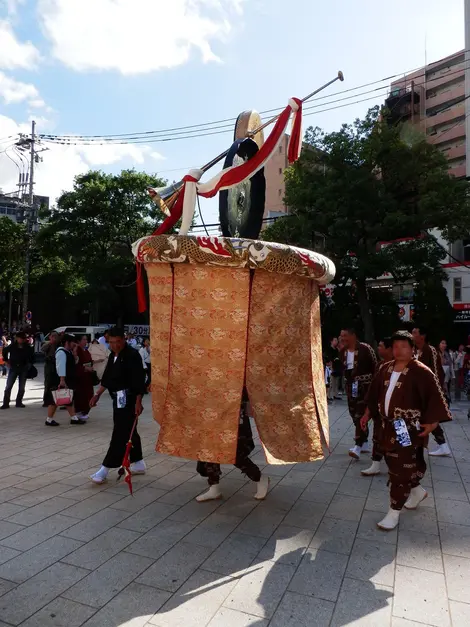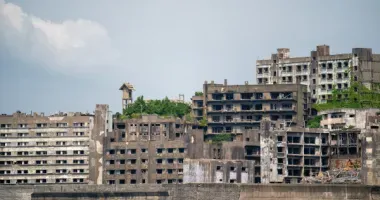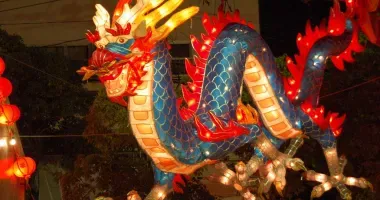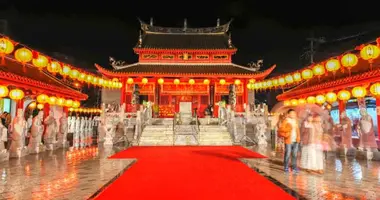The Nagasaki Kunchi Festival 長崎くんち
Restoring Traditions
Kunchi is the name of a festival held every year in autumn (October 7-9) at Suwa-jinja, a Shinto shrine in Nagasaki.
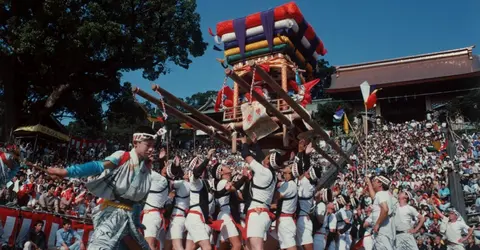
Kunchi Festival, Nagasaki
JNTO
In 1634 the construction of the island of Dejima, the only access point in Japan for foreigners during the great isolation period, began and for the first time, this festival was one of the largest in Japan, called the Kunchi festival along with Hakata and Karatsu.
A return to Japanese traditions
The creation of this festival had a clear goal: to make sure that the whole population was interested and participated in a traditional Japanese festival, moving as far away as possible from the Catholic beliefs. The 16th century was a time when Christianity was strongly established on the island of Kyushu, and many Japanese were converting to this new religion, abandoning shinto, the soul of ancestral Japan. Nagasaki was the most international city in Japan, influenced by foreign cultures: Chinese, Vietnamese, Dutch and Portuguese, and this can be seen in the various chariots that parade through the streets during the Kunchi festival.
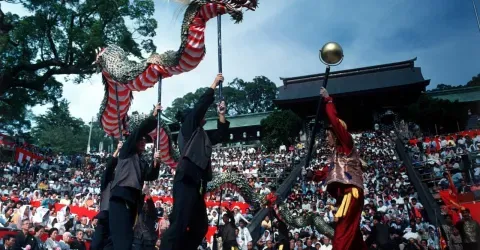
Suwa Jinja's lively atmosphere during the Kunchi Festival in Nagasaki.
JNTO
The organization of the Kunchi festival
On the first day, the three kami (gods) who reside at Suwa-jinja shrine, ride the three mikoshi (floats) to a temporary palace, Otabi-sho. After a three-day rest, on the third day a parade takes place at Suwa-jinja with the mikoshi, with a thousand people. Early in the morning, before they leave at 7am, the inhabitants make offerings at the shrine. The city of Nagasaki is divided into 59 districts, each divided into 7 groups, who take turns participating in the Kunchi every 7 years. That's why it takes seven years to see the whole festival. Each neighborhood has its own special offering, called dashimono, which is prepared four months before the festival.
Read: The Megane Bridge in Nagasaki
Festival offerings
These offerings can take several forms such as Nihon buyo, traditional Japanese dance; a boat-like chariot, or a dragon dance. During the parade the spectators shout: "Motte koi!", Which means "Again!". The participants spare no efforts to twirl, jump in the air, and show off their dashimono. It's a fantastic spectacle, the crowds go wild and there's a great atmosphere in Suwa-jinja, which is full to the point of bursting. The festival also continues in the streets of the city, as well as in front of the Otabi-sho and Yasaka-jinja shrine. All of Nagasaki resonates with the warm atmosphere of the Kunchi festivities.
This video shows you the different stages of the Kunchi, and its crazy atmosphere:





